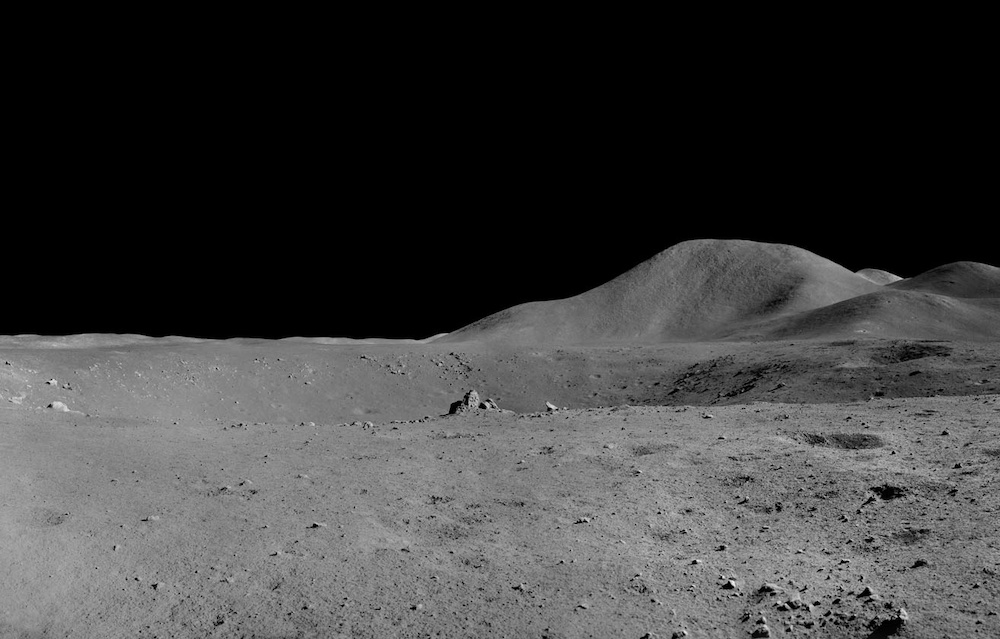
REDONDO BEACH, Calif. — The idea of a rail network across lunar soil can be looked on by many as nothing more than science fiction. Northrop Grumman Co. and the Defense Advanced Research Projects Agency (DARPA) look to change that viewpoint with recent studies yielding potential results.
In a press release dated March 19, 2024, Northrop Grumman was selected by DARPA to develop concepts for both the construction and operation of a railroad connecting future habitants across the Earth’s moon. This is part of DARPA’s 10-year Lunar Architecture (LunA-10) capability study to “establish an analytical framework for integrated lunar infrastructure that minimizes lunar footprint and provides commercial services for future lunar users.”
An August 2023 request by DARPA resulted in separate infrastructure ideas from a dozen companies selected for their respected studies, including the proposed railroad with Northrop Grumman at the helm. The study, at the hands of the global aerospace and defense technology company, included the following from the press release:
- Define the interfaces and resources required to build a lunar rail network.
- Establish a critical list of foreseeable cost, technological and logistical risks.
- Identify prototypes, demonstrations and analyses of a fully operating lunar rail system’s concept design and architecture.
- Explore concepts for constructing and operating the system with robotics, including grading and foundation preparation, track placement and alignment, joining and finishing, inspection, maintenance and repair.
In a recent news release, Northrop Grumman confirmed delivery of its study to DARPA in June 2024, based on initial findings in April. “It’s all conceptual, but we’re leveraging prior studies and working with partners like the Colorado School of Mines,” as quoted in the release by Steven Floyd, Northrop Grumman’s chief engineer of additive manufacturing and program manager for the Lunar Rail Network.
Results from the study proposed constructing the rail line with robotic vehicles for surveying, surfacing, and track laying. Initial distances between multiple sites across the Moon are expected to range up to 40 kilometers, with the goal to stretch more than 100 km. Northrop Grumman looks to commercially connect future scientific outposts, landing sites, mines and remote areas such as the Moon’s shadowed regions near the south pole that hold water ice and potentially useful mineral deposits, according to Floyd.
Proposed challenges currently mentioned in the release include uncertainty surrounding the soil composition for a stabled rail line during construction and operation, while also combating extreme temperatures in what is essentially a vacuum environment, which can lead to high stress and wear on equipment. “We also know that lunar dust is extremely damaging to equipment,” Astronomy Senior Editor Alison Klesman adds as an observation. “Not only is the loosely packed soil very easily kicked up in the low-gravity environment, the jagged shape of the dust particles themselves can scratch delicate equipment.
“Plus, because it’s dark, lunar soil readily absorbs solar radiation and heats up anything it coats. The Apollo astronauts were constantly battling the lunar dust, and cleaning or mitigation measures will likely be an important part of any permanent infrastructure on the Moon.”
Several plausible solutions are being considered as Northrop Grumman moves forward in further studies.
“We developed an integrated system concept design, using our expertise in technologies like in-space servicing robotics and autonomy, advanced power collection systems, rovers, and spacecraft subsystems,” said Floyd. “We set out to understand all pillars of building and operating a lunar railroad system: the construction, the tracks, the station infrastructure, and the actual vehicles that will traverse the route.”














Legend railway suppliers should have imput in developing lunar railway technology. Aerospace companies of course would be involved in transporting materials for railway construction and rolling stock to the Moon.
The ideal name for the first lunar settlement would be
“New Houston”! This settlement can be in the diagonal grid pattern as Downtown Houston, Texas from which the original city developed and grew.
Millions and Millions of dollars will be wasted on something that will never happen. We haven’t even figured out how to get back to the moon, let alone build a railroad on it. Absolutely nuts!
I heard that Gardner is in line to be CEO.
What will the NIMBYs say when they hear about this? It will ruin their tranquil lunar neighborhood!
Hah. Exactly what I was going to write.
What would Alice Kramden say?
There goes the neighborhood!
Ahh. Old news. In an April issue many years ago, Model Railroader magazine showed how to model a lunar railroad. Did require some scratchbuilding for the track, cars and motive power. Sorry, don’t remember what year the article was published.
April 1978 issue of Model Railroading 😀 lol…